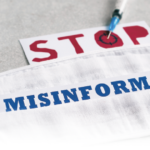Clinical Practice
Dr. Langford turned next to studies of particular interest to the practicing rheumatologist. She discussed the MIRROR randomized, controlled trial, which resulted in the expanded FDA labeling of pegloticase to include co-administration with methotrexate (MTX) in July 2022.3 Co-administration of 15 mg of MTX weekly improved pegloticase response rates at month six (MTX 71% vs. placebo 39%, P<0.0001) and significantly decreased the development of infusion reactions (MTX 4% vs. placebo 31%) and anti-drug antibodies (MTX 23% vs. placebo 50%). Though results were positive, Dr. Langford reminded the audience to consider the general impact of immunosuppression and MTX-specific side effects when taking this approach.
In July 2021, intravenous immunoglobulin (IVIG) was the first agent to be FDA approved for any inflammatory myopathy (specifically, dermatomyositis) after a randomized, double-blind, placebo-controlled trial demonstrated its efficacy and safety.4 Dr. Langford noted that during the open-label extension phase of the trial, patients in the placebo arm who were switched to IVIG had improvements similar to those who had received IVIG from study start. Further studies are needed to determine when to use IVIG (e.g., first-line treatment vs. refractory disease). Cost and safety (especially in those at risk for thromboembolic events) should also be considered.
Finally, we saw positive results in the use of intravenous tocilizumab in patients with polymyalgia rheumatica who had a demonstrated inability to reduce prednisone below 10 mg per day after eight weeks.5 Tocilizumab was associated with a lower mean prednisone dose and greater ability to discontinue prednisone, though infections were more common with tocilizumab (47%) vs. placebo (39%). “The main consideration here remains the risk of prednisone compared to the risk of the adjunctive agent,” Dr. Langford said. We look forward to further data in this regard.
Clinical Innovations
The past year saw several novel mechanistic approaches in systemic lupus erythematosus (SLE). Of particular interest are chimeric antigen receptor (CAR) T cells, which Dr. Langford concisely described. “First, lymphopheresis is performed to remove the patient’s T cells. Then, lentivirus vector containing the gene sequence (in this case, antihuman CD19) is prepared in the lab. When placed with the patient’s T cells, there is transformation to CD19 CAR T cells. These are then grown in the laboratory while the patient receives lymphodepleting therapy. When the CAR T cells are reinfused, they bind to the CD19 antigen on the surface of the patient’s B cells, leading to B cell lysis and depletion.”

